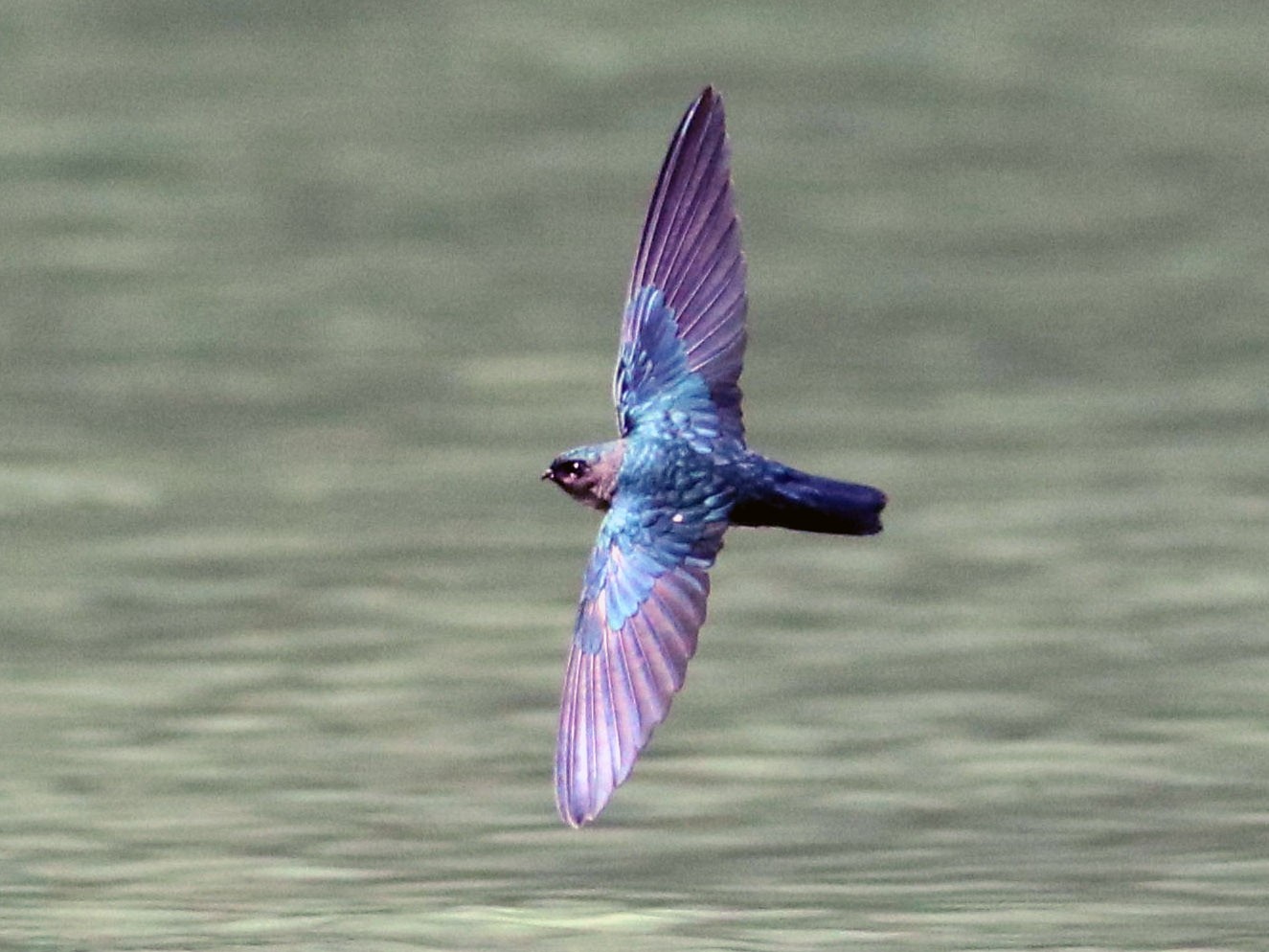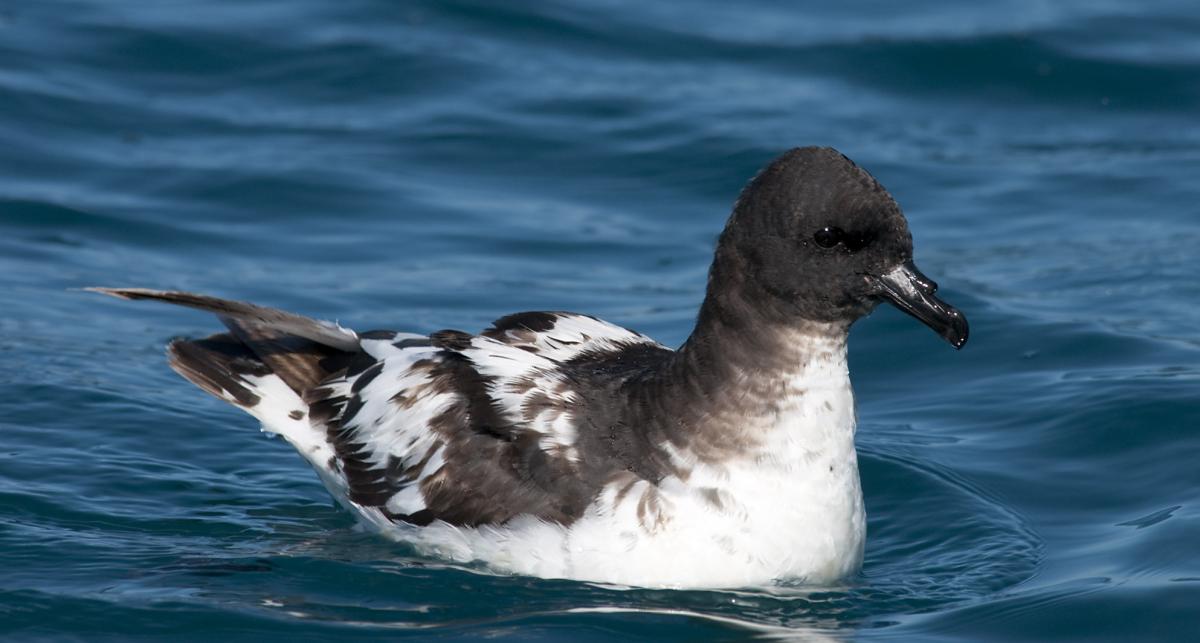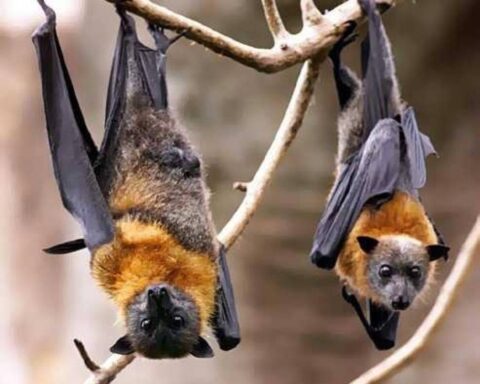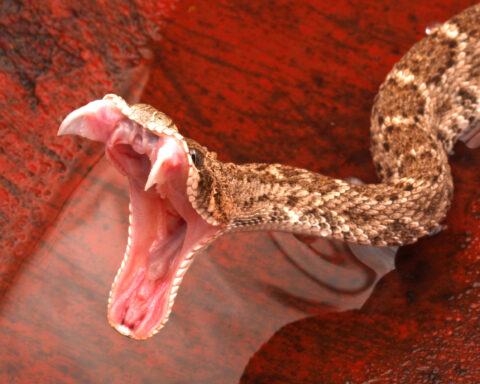Speed Records
Pitfalls in Measuring Speed
The fastest birds in the world are capable of reaching incredible speeds, with some species able to fly at over 240 kilometers per hour. However, accurately measuring the speed of these birds can be a complex and challenging task.
One of the main pitfalls in measuring speed is the use of inaccurate or unreliable methods. For example, speed guns or radar devices may not provide accurate readings if they are not calibrated correctly or if there are obstacles in the line of sight.
Another potential issue is the difficulty of tracking the bird’s movements over a long period of time. Birds often fly erratically and can change direction quickly, making it hard to get an accurate reading on their speed.
Climatic conditions such as wind resistance and air currents can also affect the accuracy of measurements. For instance, wind shear can either assist or hinder a bird’s flight, depending on its direction and magnitude.
Furthermore, observer bias can be a significant issue when attempting to measure speed. Researchers may unintentionally influence the birds’ behavior through observation, potentially altering their flight patterns and thereby affecting the accuracy of the measurements.
Additionally, there is often limited access to remote areas where certain bird species are known to reside. This scarcity of observation points can limit the number of data points available for analysis.
The use of outdated or inconsistent methods can also lead to inaccurate results when measuring speed. For example, using different types of instruments or relying on anecdotal evidence from multiple observers can introduce inconsistencies into the data.
Lastly, statistical analysis may be necessary to account for variables such as differences in bird size, weight, and muscle structure, which can significantly impact an individual’s velocity during flight.
The measurement of bird speed is often complicated by various factors such as air resistance, wind conditions, and the difficulty in observing birds during their natural flight.
The measurement of bird speed can be a complex task due to various factors that affect their movement through the air. Air resistance is one of the primary challenges, as it opposes the forward motion of birds and can greatly impact their speed. Wind conditions also play a significant role in determining bird speeds, with headwinds, tailwinds, and crosswinds all influencing flight dynamics.
Furthermore, observing birds during their natural flight can be a significant challenge. Birds often fly at high altitudes or in remote areas, making it difficult for scientists to gather accurate data. Additionally, the speed of birds can vary greatly depending on the species, size, and weight, as well as the type of flying they are performing.
To overcome these challenges, researchers use a variety of methods to measure bird speeds, including:
- Radio telemetry: This involves fitting birds with small radio transmitters that send signals back to the ground, allowing scientists to track their movements and calculate their speed.
- Tethered flight: This method involves attaching a bird to a tether while it flies, allowing researchers to measure its speed in a controlled environment.
- Ground-based tracking: This method involves using cameras or radar systems to track birds from the ground, allowing scientists to estimate their speed based on their movement patterns.
The fastest birds in the world are typically those that have evolved to migrate long distances across open water or land. Some of the top contenders include:
Peregrine Falcon
Reaching speeds of up to 242 mph (390 km/h) during its characteristic hunting dive, the peregrine falcon is widely considered one of the fastest birds on record.
Cape Petrel
This seabird has been recorded reaching speeds of over 50 mph (80 km/h), with some individuals reaching up to 60 mph (97 km/h) during their migrations.
Lammegger’s Swiftlet
This small bird is found in Southeast Asia and can reach speeds of up to 30 mph (48 km/h) as it migrates across the region.
It’s worth noting that these speeds are often recorded during specific events or conditions, such as hunting dives or migration periods. In general, the speed of birds can vary greatly depending on the context and circumstances of their flight.
Birds’ Unique Adaptations
Streamlined Bodies
The fastest birds in the world are often characterized by their Streamlined Bodies, which enable them to reach incredible velocities while minimizing air resistance. These adaptations allow them to cut through the air with ease, making them ideal for long-distance flight and hunting.
One of the key features of streamlined bodies in birds is the Sleek Shape. Birds such as the Peregrine Falcon have a slender body shape that allows them to slice through the air with minimal resistance. This shape is achieved through a combination of their long, narrow wings and their pointed head and tail.
Another important aspect of streamlined bodies in birds is their Aerodynamic Feathers. Birds have specially adapted feathers that help to reduce air resistance as they fly. These feathers are designed to be extremely thin and flexible, allowing them to bend and flex in the wind without creating drag. The shape of these feathers also helps to channel airflow around the bird’s body, reducing turbulence and increasing speed.
In addition to their physical features, birds with streamlined bodies often have Efficient Wing Shapes. The wings of these birds are designed to produce lift while minimizing drag, allowing them to stay aloft for long periods of time. This is achieved through a combination of the wing’s shape and its angle of attack.
The result of these adaptations is that birds with streamlined bodies can reach incredible velocities. Some species of birds, such as the peregrine falcon, can dive at speeds of over 200 mph, making them some of the fastest animals on record. Even more impressive is the fact that they are able to maintain this speed for extended periods of time, allowing them to catch prey or escape danger with ease.
In conclusion, the streamlined bodies of fast birds represent a remarkable example of evolutionary adaptation. Through their sleek shape, aerodynamic feathers, efficient wing shapes, and other features, these birds have developed the ability to fly at incredible velocities while minimizing air resistance. Their ability to reach such high speeds is a testament to the ingenuity of nature and serves as an inspiration for designers and engineers seeking to create more efficient aircraft.
Many of the fastest birds in the world have streamlined bodies that help reduce air resistance and increase speed.
The avian world is home to some incredibly speedy birds, with many species capable of reaching incredible velocities. These fastest birds in the world have evolved unique physical characteristics that enable them to cut through the air with ease and achieve remarkable speeds.
One key feature shared by these speed demons is their streamlined bodies. Streamlining is a design principle used by engineers to reduce drag and increase efficiency, but it’s not just limited to human-made objects – many birds have also adopted this strategy to boost their flying prowess.
The streamlined shape of the bird’s body helps to reduce air resistance in several ways. For one, it minimizes the amount of turbulence generated around the bird as it moves through the air. By reducing turbulence, the bird can conserve energy and maintain a consistent speed over longer periods of time.
Another benefit of a streamlined body is that it allows birds to slice through the air more efficiently. When an object – or in this case, a bird – cuts through the air at high speeds, the airflow around it creates areas of low pressure above and below the wing (or in this case, the entire body). By presenting a smooth surface to these airflow patterns, birds can take advantage of the resulting aerodynamic lift to generate additional thrust.
So, what makes up a streamlined bird body? Generally speaking, these speedsters tend to have elongated, torpedo-shaped bodies with a narrow waist and pointed nose. This profile allows them to cut through the air with minimal drag while still maintaining stability and control during flight.
The peregrine falcon is one of the fastest birds in the world, reaching speeds of over 240 mph (386 km/h) when diving, or stooping. Its streamlined body features a slender profile, narrow wings, and a pointed nose that all contribute to its incredible aerodynamic efficiency. Similarly, the golden eagle has a streamlined body that enables it to reach speeds of up to 200 mph (322 km/h), making it one of the fastest birds on record.
While these speed records are certainly impressive, they’re not just about raw power – there’s also an element of finesse at play. Many of these fast birds have evolved to optimize their aerodynamics in different flight regimes, from cruising speeds to high-G dives and even landings.
In conclusion, the streamlined bodies of many of the fastest birds in the world are a testament to the incredible adaptability of nature. By leveraging the principles of aerodynamics, these speedsters have been able to fine-tune their flying capabilities to achieve remarkable velocities and dominate their respective environments.
Powerful Muscles
The title “Powerful Muscles: The Fastest Birds In The World” refers to the incredible speed and agility displayed by certain bird species, which are capable of reaching remarkable velocities during flight. These birds have evolved unique physical characteristics, including powerful muscles that enable them to achieve such exceptional speeds.
Among the fastest birds in the world are various species of eagles, falcons, and hawks, which belong to the family Accipitridae. These raptors possess extremely strong and well-developed chest and wing muscles that allow them to generate enormous force during flapping and soaring.
The key factor contributing to their exceptional speed lies in the unique anatomy of their wings. Birds have hollow bones, which make up about 12% of their body weight. This lightweight skeletal system is a significant advantage when it comes to flying at high speeds. Additionally, the shape and structure of their wing tips allow them to produce maximum lift during flight.
One fascinating aspect of these birds’ ability to fly quickly is that they can make incredible dives called stoops, where they plummet towards the ground from great heights before pulling out of their dive at an almost impossible angle. During these maneuvers, some eagles and hawks have been observed reaching speeds of over 240 kilometers per hour!
Another key factor in a bird’s speed is its body mass compared to wing size. Birds that are lighter with larger wings tend to be faster than those that are heavier or have smaller wings. This balance between weight, wing size, and power output enables birds to achieve remarkable velocities.
The fastest bird of all, the peregrine falcon (Falco peregrinus), has been recorded diving at an incredible 322 kilometers per hour during a stoop. The reason behind this exceptional speed is largely due to its massive chest muscles and its ability to store large amounts of energy in these muscles, which allows it to accelerate rapidly.
Some examples of other fast birds include the gyrfalcon (Falco rusticolus), with speeds reaching up to 300 kilometers per hour during a dive. The golden eagle (Aquila chrysaetos) is another impressive example, able to reach speeds of nearly 250 kilometers per hour.
The combination of powerful muscles, unique wing anatomy, and efficient body design allows certain bird species to fly at incredible speeds, demonstrating their remarkable agility and maneuverability in the skies.
Fast bird species typically possess powerful chest muscles, which enable them to flap their wings quickly and efficiently.
The fastest bird species are capable of incredible speed due to their unique physiology, specifically the development of powerful chest muscles. These muscles enable the birds to flap their wings at an astonishing rate, generating tremendous force and propelling them forward with incredible velocity.
One of the primary factors contributing to a bird’s speed is its wing structure and movement pattern. Birds with long, pointed wings tend to be faster flyers due to their ability to generate more lift and thrust during each flapping cycle.
The peregrine falcon is widely considered the fastest bird in the world, capable of reaching speeds of up to 242 mph (390 km/h) during its characteristic hunting dive, known as a stoop. The peregrine’s exceptional speed allows it to catch prey in mid-air with deadly precision.
Other fast bird species include the golden eagle, which can reach speeds of up to 240 mph (386 km/h), and the gyrfalcon, which can achieve speeds of around 200 mph (322 km/h). These birds have evolved powerful chest muscles that enable them to generate the necessary force and speed for their remarkable feats.
The physiology behind fast bird flight involves several key adaptations. For example, fast birds tend to have more robust wings and a longer wing span than slower-flying species. Additionally, they typically possess stronger muscles in their pectoral girdle and chest cavity, which enable them to flap their wings rapidly and efficiently.
Another crucial factor is the bird’s body shape, with streamlined profiles reducing air resistance and allowing for greater speed. Fast birds also tend to have shorter necks and legs than slower-flying species, as these features can create additional drag and hinder flight performance.
In conclusion, fast bird species possess remarkable physiological adaptations that enable them to achieve incredible speeds during flight. The development of powerful chest muscles, combined with specialized wing structures and movement patterns, allows birds like the peregrine falcon to reach phenomenal velocities and excel in their environments.
Airborne Maneuvers
Dive-Bombing
The Dive-Bombing of the fastest birds in the world is an exhilarating and challenging task that requires precision, skill, and a deep understanding of aerodynamics.
These birds, including the Peregrine Falcon, the Golden Eagle, and the Gyrfalcon, are capable of reaching speeds of up to 250 mph during their characteristic hunting dives, known as stoops.
To successfully dive-bomb these birds, one would need to have an advanced understanding of their flight patterns, wind conditions, and air currents.
The optimal time to attempt this feat is usually early in the morning or late in the afternoon when the sun’s position creates optimal updrafts and thermals for aerobatic maneuvers.
The aircraft used would need to be highly maneuverable, with a high power-to-weight ratio, allowing it to perform tight turns and sudden changes in direction at high speeds.
The pilot would require extensive training in aerobatics, precision flying, and high-G-force tolerance to safely navigate the intense forces involved in Dive-Bombing these fast birds.
The following are some of the key considerations when planning a dive-bomb run on the fastest birds in the world:
- Aircraft Selection: Choose an aircraft with advanced aerodynamics and high maneuverability, such as an F-22 Raptor or an SU-57 Felon.
- Flight Planning: Plan your route to take advantage of updrafts and thermals for optimal speed gains and precise control during the dive.
- Aerobatic Training: Complete extensive training in aerobatics, precision flying, and high-G-force tolerance to safely navigate intense forces involved in dive-bombing these fast birds.
- Wind Conditions: Monitor wind conditions closely and adjust your flight plan accordingly to ensure optimal performance during the dive.
- Communication: Establish clear communication with air traffic control and other aircraft in the vicinity to minimize risks of collision or misinterpretation of your intentions.
The experience will undoubtedly be a thrilling adventure that tests one’s limits, pushing them to the edge of their capabilities while observing the incredible speed and agility of these Fastest Birds In The World.
Some birds use the element of surprise by performing highspeed dives, known as stoops or divebombs, in order to catch prey off guard.
The element of surprise is a key tactic employed by some birds in their hunting strategies, particularly when it comes to catching prey off guard. By performing high-speed dives, known as stoops or divebombs, certain bird species are able to outmaneuver their unsuspecting targets.
This impressive aerial maneuver allows these birds to rapidly close in on their quarry, often before the prey has even had a chance to react. The high-speed dive enables the bird to generate tremendous force and speed, making it a formidable predator in its own right.
The stooping technique is not unique to any particular group of birds, but rather is used by various species across different orders, including raptors and seabirds. Some examples of birds known for their high-speed diving include the peregrine falcon, which is widely regarded as one of the fastest birds in the world, with speeds reaching up to 242 mph (390 km/h), and the gyrfalcon, which has been clocked at speeds of over 200 mph (322 km/h).
The high-speed dive is made possible by a combination of factors, including the bird’s streamlined body shape, its powerful wing muscles, and its exceptional aerodynamic capabilities. These adaptations enable birds to achieve remarkable velocities while minimizing drag and maintaining control during the rapid descent.
The element of surprise provided by the divebomb or stoop allows these birds to exploit their prey’s vulnerabilities, often resulting in a successful hunt. This strategy is particularly effective for catching fast-moving or agile prey, such as fish, which can be difficult to catch using more conventional hunting methods.
In addition to the high-speed dive, some bird species also employ other tactics to catch their prey off guard. For example, some birds will use stealth and camouflage to approach their quarry undetected, while others will use coordinated attacks or ambushes to overwhelm their prey.
The combination of speed, agility, and cunning makes these birds formidable predators in their respective environments. Their ability to adapt and innovate their hunting strategies ensures that they remain successful hunters, even in the face of changing prey populations and environmental conditions.
Tight Turns and Quick Changes in Direction
The fastest birds in the world are capable of making incredible tight turns and quick changes in direction, allowing them to pursue prey with incredible agility.
This ability is particularly well-suited for species that hunt small, fast-moving insects or other birds, as it enables them to rapidly change course and catch their quarry off guard.
The fastest bird on record is the Peregrine Falcon, which can reach speeds of up to 242 miles per hour (390 kilometers per hour) during its characteristic hunting dive, known as a stoop.
During this dive, the Peregrine Falcon folds its wings and tucks in its head, using gravity to increase its speed and make sharp turns with incredible precision.
The bird’s remarkable agility is due in part to its streamlined body shape, which reduces air resistance and allows it to cut through the air with minimal effort.
The Peregrine Falcon’s tail feathers also play a crucial role in its tight turns, as they can be adjusted to provide maximum lift during sharp banking maneuvers.
Other birds, such as the Gyrfalcon and the Golden Eagle, are also renowned for their exceptional speed and agility, making them formidable hunters in their respective habitats.
These remarkable birds have evolved over time to develop the physical characteristics and skills necessary to thrive in their environments, where quick changes of direction and sharp turns can be the difference between life and death.
The ability to make tight turns and quick changes in direction is an essential component of a bird’s hunting strategy, allowing them to catch prey off guard and secure a meal with minimal effort.
Fast birds are capable of making sharp turns and quick changes in direction while in flight, which enables them to evade predators or pursue prey with ease.
Fast birds are capable of making sharp turns and quick changes in direction while in flight, which enables them to evade predators or pursue prey with ease.
This ability is a result of the unique physiology of fast birds, specifically their skeletal system, muscle structure, and aerodynamic features.
Fast birds have long, pointed wings that allow them to fly at high speeds while maintaining control over their trajectory.
The shape of their wings also enables them to generate more lift than slower-flying birds, allowing them to stay aloft for longer periods of time.
Additionally, the powerful muscles in fast birds’ bodies enable them to rapidly change direction and speed in response to changing circumstances.
In particular, the peregrine falcon is widely considered the fastest bird in the world, with some individuals reaching speeds of over 200 mph during their characteristic hunting dive, known as a stoop.
Other notable examples of fast birds include the golden eagle, the gyrfalcon, and the swallow.
All of these species are capable of making sharp turns and quick changes in direction while in flight, which allows them to successfully hunt prey or evade predators.
The ability of fast birds to make sharp turns and quick changes in direction is an important adaptation that has helped these species thrive in their environments.
Notable Speed Records
The Peregrine Falcon’s Record-Breaking Dive
The Peregrine Falcon is widely considered to be the fastest bird in the world, with the ability to reach incredible speeds during its characteristic hunting dive, known as a stoop. This remarkable feat has been extensively studied and documented by ornithologists and scientists.
When a Peregrine Falcon begins its stoop, it reaches speeds of up to 240 miles per hour, making it the fastest member of the animal kingdom on record. This incredible acceleration is achieved through a number of unique physical adaptations, including its streamlined body shape, powerful muscles, and specially designed feathers.
The Peregrine Falcon’s remarkable speed is not just a result of its physical characteristics, but also its highly efficient hunting strategy. The bird typically begins by scanning the ground from a great height for potential prey, before swooping down with incredible agility and precision to deliver a fatal blow.
During this dive, the Peregrine Falcon experiences intense G-forces, similar to those experienced by high-speed aircraft pilots during takeoff and landing. This forces blood away from its brain and up towards its extremities, which can lead to a range of physiological effects, including vision loss and even fainting.
However, despite these extreme physical demands, the Peregrine Falcon has evolved a number of remarkable physiological adaptations that enable it to survive and thrive in this high-speed environment. These include an incredibly efficient cardiovascular system, highly adaptable muscle fibers, and specialized eye structures that help to reduce the effects of intense G-forces.
Interestingly, the Peregrine Falcon’s record-breaking speed is not just a static achievement – it can also change depending on a range of factors, including altitude, air resistance, and wind conditions. As a result, scientists are constantly working to refine their understanding of this remarkable bird’s performance and optimize its flight dynamics.
Some key facts about the Peregrine Falcon’s record-breaking dive include:
- The Peregrine Falcon can reach speeds of up to 242 mph during its fastest dives, making it the fastest member of the animal kingdom.
- The bird experiences intense G-forces during this dive, similar to those experienced by high-speed aircraft pilots.
- The Peregrine Falcon’s speed and agility are due in part to its highly efficient hunting strategy, which involves scanning from great heights and swooping down with precision to deliver a fatal blow.
- The bird’s remarkable physical adaptations include streamlined body shape, powerful muscles, and specially designed feathers that enable it to reach incredible speeds during its stoop.
The peregrine falcon is widely recognized for holding the record of the fastest speed ever recorded by a bird, reaching speeds of up to 242 mph (390 km/h) during its characteristic hunting dive.
The peregrine falcon is an apex predator and a member of the Falconidae family, known for its impressive hunting abilities and incredible speed.
During its characteristic hunting dive, also known as a stoop, the peregrine falcon reaches speeds of up to 242 mph (390 km/h), which is the fastest recorded speed ever achieved by a bird in the wild or in captivity.
This remarkable speed allows the peregrine falcon to pursue and catch prey with ease, making it one of the most efficient hunters in the animal kingdom.
The peregrine falcon’s impressive speed is due in part to its unique physiology, which includes powerful muscles, a streamlined body, and an aerodynamic wing shape that allows it to cut through the air with minimal resistance.
When diving, the peregrine falcon folds its wings against its body and tucks its tail under its feathers, creating an incredibly compact profile that reduces drag and allows for even greater speeds.
The peregrine falcon’s remarkable speed is not limited to a single instance; it has been recorded multiple times in various locations around the world, demonstrating its consistent ability to achieve extreme velocities during its hunting dives.
Interestingly, the peregrine falcon’s incredible speed is not just an adaptation for hunting; it also plays a crucial role in helping the bird conserve energy and avoid predators by allowing it to quickly escape danger or chase down prey with ease.
The peregrine falcon’s impressive speed has earned it recognition as one of the fastest birds in the world, and its unique physiology and hunting abilities continue to fascinate scientists and animal enthusiasts alike.
- Countries That Start With The Letter S - September 3, 2024
- Countries That Start With The Letter D - September 2, 2024
- 10 Products Created By Nazi Germany That Are Still Used Today - August 31, 2024












